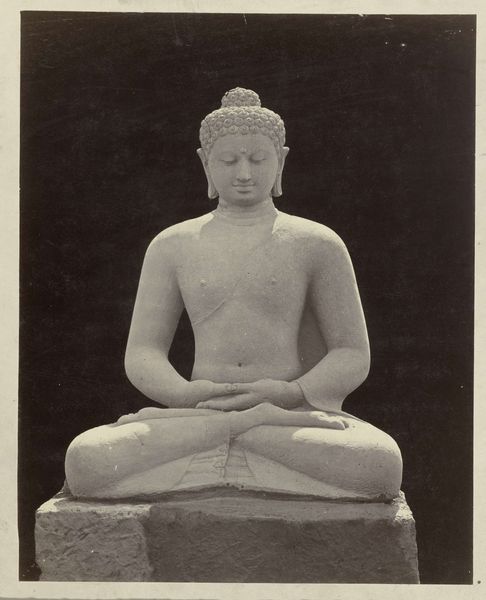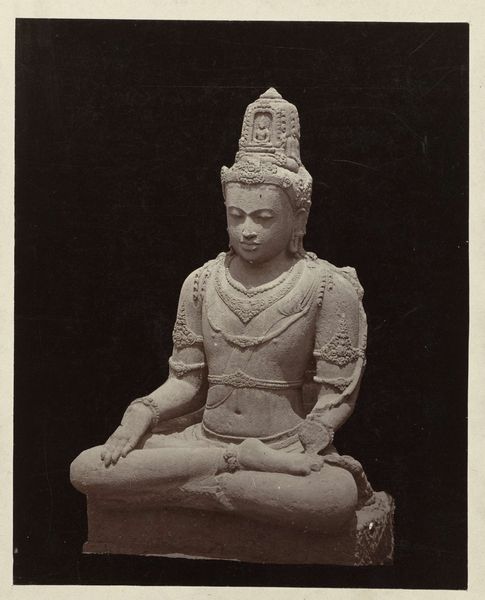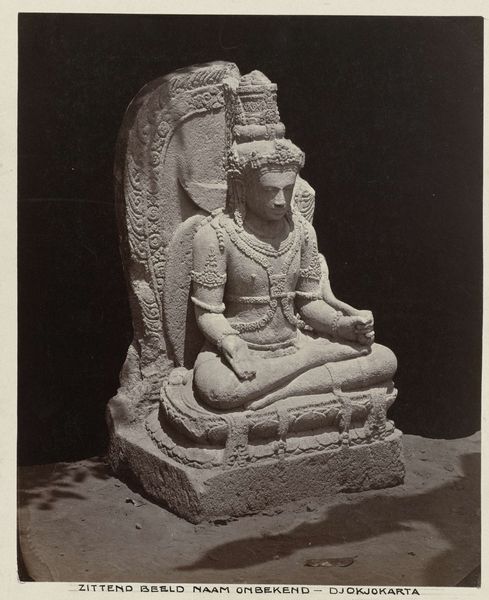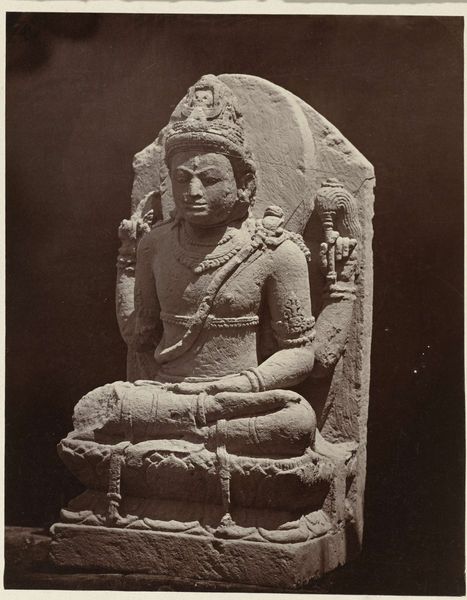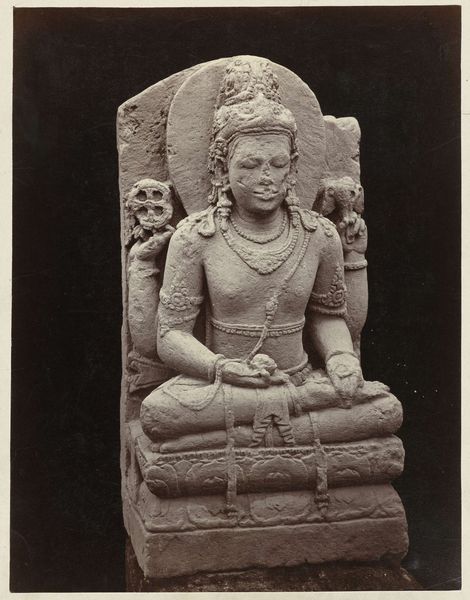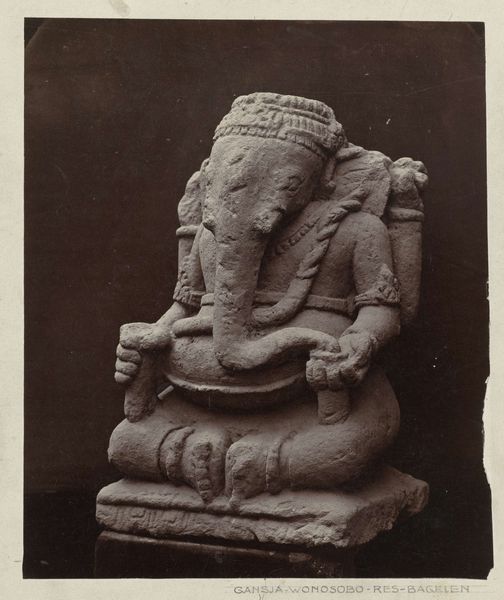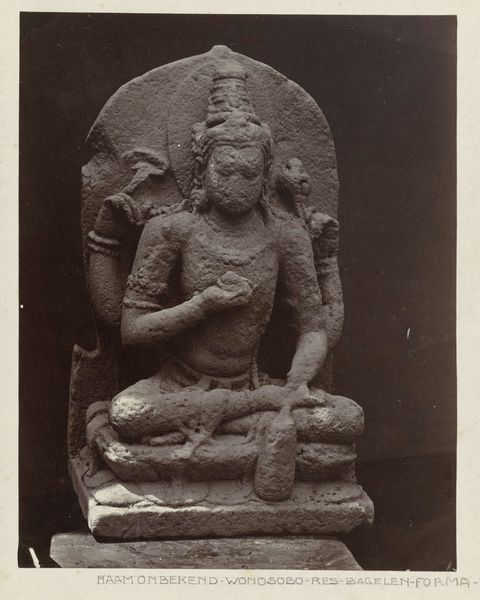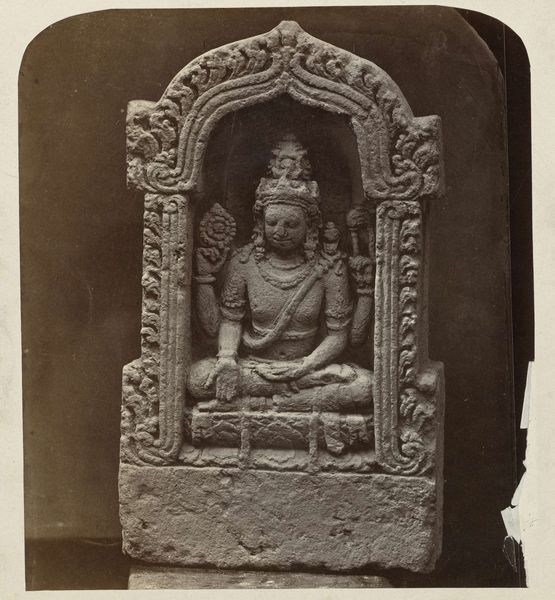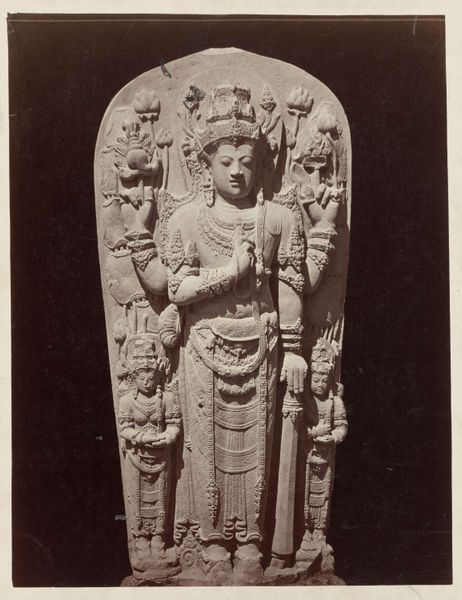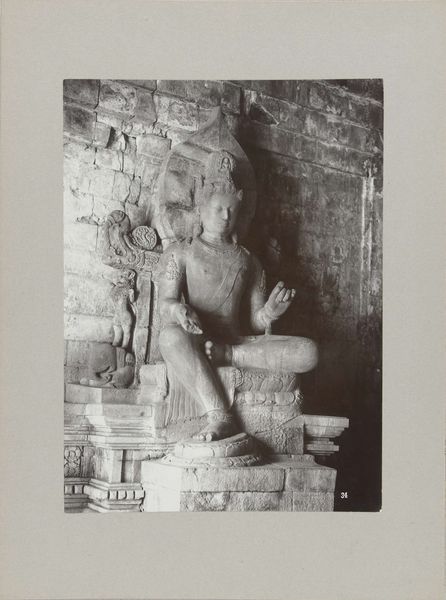
Beeld van Boeddha in dharmacakramudra afkomstig uit een van de stupa's van de Borobudur. Possibly 1873 - 1879
0:00
0:00
photography, sculpture
#
sculpture
#
asian-art
#
figuration
#
photography
#
ancient-mediterranean
#
sculpture
#
19th century
#
realism
Dimensions: height 300 mm, width 240 mm
Copyright: Rijks Museum: Open Domain
Curator: Immediately, a sense of profound serenity washes over me. There’s something about the smooth contours and the almost melancholic gaze of this Buddha. Editor: Indeed. We’re looking at a photograph by Isidore Kinsbergen, taken sometime between 1873 and 1879. It depicts a Buddha statue, likely sandstone, originally from one of the stupas at Borobudur. Curator: Kinsbergen really captures the texture, doesn't he? Almost makes you feel you could reach out and touch the cool stone. You know, it’s more than just a document; it feels… spiritual. Editor: Well, photography in that era was itself a meticulous material process. Each print was painstakingly created, highlighting its inherent value as an object, far from the digital clicks we’re used to now. And think about the colonial context: Kinsbergen photographing artifacts for Western consumption and scholarship. The means of representation carry a heavy weight, transforming sacred objects into commodities. Curator: That's true, although maybe, just maybe, he also saw something beautiful, something profound. There's an argument for appreciation regardless of origin. The positioning of the hands in dharmacakramudra – the gesture of teaching – almost transcends any material constraints or socio-political history, at least for me. I feel invited to hear, to learn. Editor: The photograph highlights form. Light reflecting from stone, revealing where someone carved and smoothed the material. What labor went into this statue, extracted and placed within this colonial system? Who were those hands and why do they remain unnamed here? The consumption and subsequent transportation is also telling. It shapes how we understand value, art, and labor itself. Curator: Fair points. It makes you wonder about all the untold stories contained within the statue, doesn’t it? Hidden behind the serene façade. The way the photograph renders a moment both concrete and ephemeral feels haunting, a reminder that history is a tangible force and perhaps an illusion, as in a Buddhist philosophical perspective. Editor: I'm struck by the tension between the sacred, the objectified, the hand-crafted, the photograph. The dialogue about how these materials were both handled and the colonial powers at work—the very foundations of museums—is essential. Curator: Yes, it certainly prompts a deeper consideration of art and its travels through time and power. Editor: Absolutely, a lot to unpack in a single image!
Comments
No comments
Be the first to comment and join the conversation on the ultimate creative platform.
